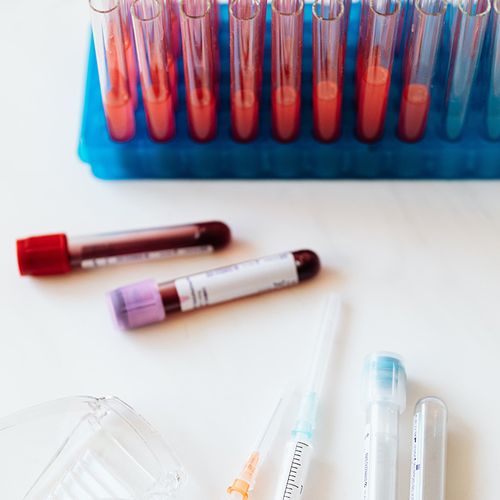One in four patients who has the blood cancer known as multiple myeloma has
no major symptoms at the time of diag. nosis. The disease, which usually develops after age 60, occurs when a type of white blood cell a plasma cell) found in the bone marrow becomes abnormal, producing cells that multiply uncontrollably myeloma cells). The result is bone erosion, anemia and other complications.
Latest development: With recently discovered drug therapies, more than 90% of patients suffering from this incurable yet treatable cancer can achieve at least a 50% reduction in the size and number of tumors—or even a complete remission, sometimes lasting for up to 10 years.
Are You At Risk?
The exact cause of multiple myeloma is unknown, but there is a small increased risk within families, and an approximately 5% occurrence rate within extended families. A combination of environmental factors, including exposure to agricultural chemicals (such as dioxins) and benzene-related chemicals (such as solvents), is believed to contribute most.
A primary symptom of multiple myeloma is a deep and persistent pain in the spine, ribs and/or hips. Although the pain initially can be intermittent, a progressive, persistent pain ultimately develops.
Important: Anyone who suffers from back or bone pain that isn't related to an injury and that lasts longer than four to six weeks needs a checkup, possibly including X-rays and/or other scans, such as computed tomography (CT). It's best to start by seeing an internist, who may refer you to an orthopedist or rheumatologist. In addition to bone pain, symptoms include…
- Fatigue. The multiplication of myeloma cells can reduce red blood cell production in bone marrow, causing anemia and weakness.
- Fractures. Multiple myeloma causes loss of bone density, which increases the risk for bone fractures-even from minor accidents, such as bumping into furniture.
- Frequent infections. Kidney and/or bladder infections often occur in multiple myeloma patients. That's because the proliferation of abnormal cells can inhibit the production of immune cells that are needed to fight infection.
Diagnosing Multiple Myeloma
Simple blood and urine tests that are performed during a routine physical exam can reveal signs of multiple myeloma. However, more detailed follow-up testing is required if the disease is suspected.
What the doctor looks for…
- Elevated M proteins. Abnormal plasma cells secrete large amounts of monoclonal immunoglobulin (M protein). If these proteins are present in blood (or in urine), other blood tests may be necessary
Important: Many patients have smoldering myeloma-slight abnormalities that progress slowly over a period of years. They are at higher risk of progressing to multiple myeloma and need frequent monitoring, including blood tests every one to two months.
- Anemia. This is the most common indicator of myeloma cell buildup in bone marrow.
Other warning signs: Low white blood cell or platelet counts or elevated serum levels of beta-2-micro-globulin (another protein produced by myeloma cells).
If blood and urine tests point to multiple myeloma, X-rays, a CT scan or a magnetic resonance imaging (MRI) scan will be needed to check for a loss of bone density. A bone marrow biopsy can be performed to confirm the presence of myeloma cells.
Best Treatment Options
When a diagnosis of multiple myeloma is established, drug treatment is required, even if the patient has no symptoms. Treatment can delay the onset of symptoms...or relieve discomfort and minimize complications once symptoms start. Treatment includes oral or intravenous drugs that eliminate myeloma cells. Other measures include radiation treatments and bone therapy with bisphosphonate drugs, such as pamidronate (Aredia), to improve bone healing and strength. Main drug therapies...
- Thalidomide/dexamethasone. Thalidomide, used to treat morning sickness in the 1950s, was withdrawn from the market when it was found to cause severe birth defects. It's recently been found to be extremely effective for multiple myeloma-and very safe as long as it's not taken by pregnant women.
When combined with the steroid dexamethasone, thalidomide inhibits the growth and spread of myeloma cells and doesn't cause the side effects of chemotherapy. About 70% of patients who take this drug combination improve significantly, and about 35% have excellent results or even a remission.
- Velcade/Revlimid. Both are new drugs developed for multiple myeloma-particularly for resistant forms that don't respond to other treatments. Like thalidomide, they're combined with dexamethasone, but they have a higher success rate...and are better tolerated than older chemotherapy drugs.
- High-dose chemotherapy/stem-cell transplant. Until new drugs were discovered in the late 1990s, this was considered one of the best treatments—and it still is the standard of care following initial therapy with other drugs.
How it works: Patients take drugs for three to six months to achieve a partial remission. Injections are given to stimulate the release of immature blood cells (stem cells) from the bone marrow into the blood, and the stem cells are then "harvested." Next, patients take very high doses of a chemotherapy drug to wipe out the myeloma cells remaining in the bone marrow. The original stem cells are then reintroduced intravenously to replace the damaged bone marrow.
About half of patients who receive high-dose chemotherapy and stem-cell transplant can achieve a remission, and most have a significant reduction in symptoms.
A Persistent Itch May Be A Sign of Skin Cancer
Any skin irritation that persists for weeks A may be early-stage skin cancer, especially if it increases in size, changes color or bleeds. See a dermatologist—he/she usually can tell quickly whether an irritation is benign or cancerous.
